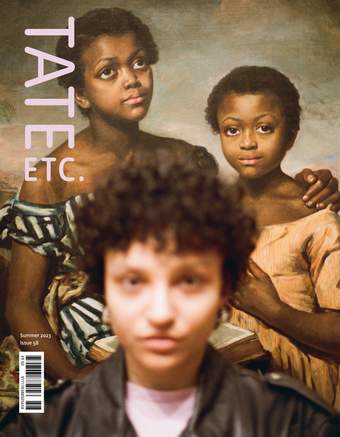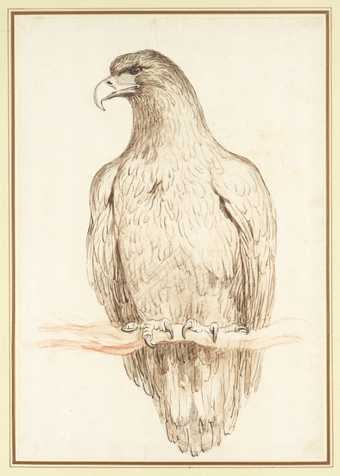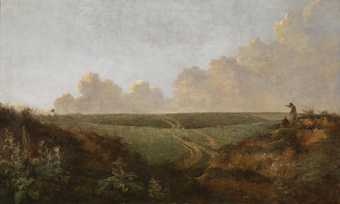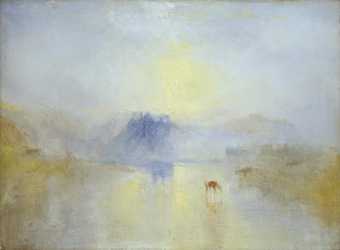
George Stubbs
Haymakers
(1785)
Tate
In 1785, the year that George Stubbs painted Haymakers and Reapers, the Industrial Revolution had already commenced in Britain. The cotton fabrics worn by the plump agricultural labourers in these picturesque scenes were most likely produced in Lancashire through newly mechanised processes, using raw cotton harvested by enslaved people of West-African origin, either working in the British colonies in the Caribbean or the recently independent United States of America. The pristine whiteness of the labourers’ clothes and skin belies the reality of the situation: the weather – a scorching sun, wind or rain – and dirt and muddy soil. The poverty and exhaustion of the labourers is unseen, as are the new factories springing up just over the horizon and the colonised people overseas, with whose bodies the wealth of the nation was built. Instead, these British workers dress in buckled, shiny leather shoes, and do not break a sweat, while undertaking the back-breaking labour of bringing in the harvest. What is notable in these two paintings is that which is absent.
Before the advent of modernity, most of the British population lived in economically self-sufficient rural households, writes social historian Christopher Hill. The textiles they wore were generally spun at home and the food they ate was raised on their own plots or the common land. But in the decades prior to these paintings being made, such ways of living, practiced for centuries, increasingly became unsustainable. A series of parliamentary acts decreeing the enclosure of the commons led to the loss of ancient rights such as hunting or collecting wood for fuel in the forests, and grazing sheep on open spaces. Commencing in the early modern period, this process was referred to as internal colonisation. Standards of living dropped dramatically in the 18th century and, having become for the most part landless, rural British populations were increasingly dependent on their landlords, becoming a people unable to refuse wage labour – as well as a nation of consumers. Perfected at home, this system of privatisation of the commons was exported throughout the British empire.
Ushering in a new capitalist era, Adam Smith’s The Wealth of Nations was published just nine years before Stubbs depicted these labourers. Despite the enlightenment philosophy of individual freedom swirling in the air, the majority were in no position to taste liberty with their daily bread. In 1785, there were still four years to wait before the storming of the Bastille in Paris, six years until the Haitian revolution began, and seven until Mary Wollstonecraft’s A Vindication of the Rights of Women became available to those who could both read and afford books. The presence of the overseer in Reapers, sitting high up on his beautifully depicted horse, communicates that there is social hierarchy here. This foreman stands in for another figure present in the image through his absence (and it is a ‘he’): the landlord for whose pleasure this idealised image would have been created. After all, who else but the beneficiaries of the system of exploitation that Stubbs unwittingly represents had the means to buy such a painting?
Haymakers and Reapers were purchased with assistance from the Friends of the Tate Gallery, the Art Fund, the Pilgrim Trust and subscribers in 1977.
Olivia Plender is an artist who lives in Stockholm. Her artwork Set Sail for the Levant: A Board Game About Debt (or a Social Satire) 2007 is included in the new collection displays at Tate Britain.
To read more of our special feature celebrating Tate Britain's rehang, visit www.tate.org.uk/tate-etc/issue-58-summer-2023/alex-farquharson-tate-britain-the-state-were-in




